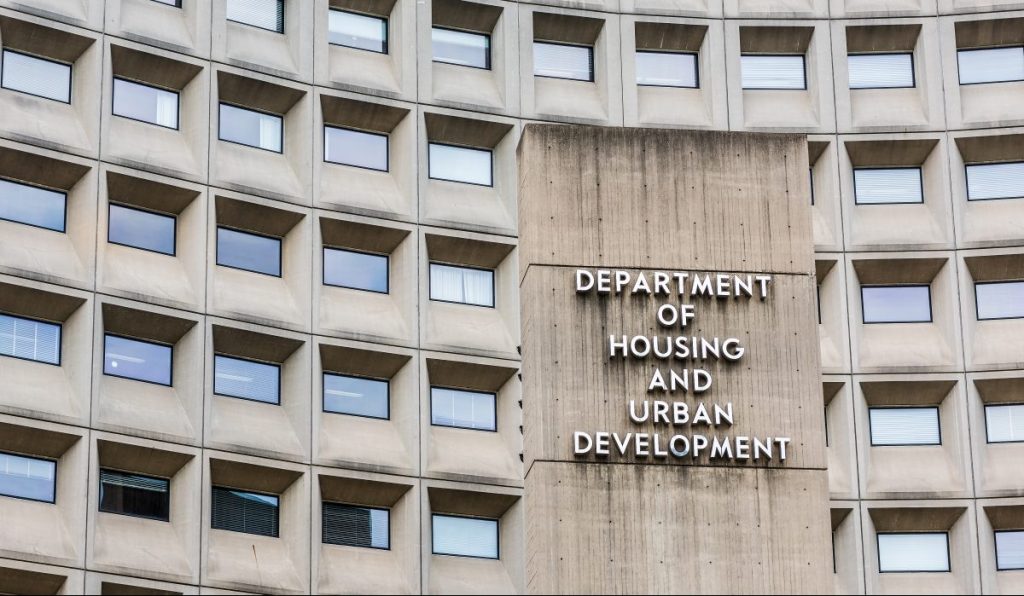The serious delinquency rate in the Federal Housing Administration loan portfolio is now far less than its pandemic peak, and the Department of Housing and Urban Development said sustained improvement will factor in to whether it adjusts mortgage insurance premiums.
As of December 2021, 7.28% of FHA loans were seriously delinquent, down from a seasonally adjusted high of 12.04% in March 2021, according to FHA’s latest report.
Potomac Partners, a consultancy with a focus on FHA, said that the number of seriously delinquent loans had dwindled to 422,349 by January 2022, or 5.75%, based on data from FHA’s Neighborhood Watch.
A HUD spokesperson said the normalization of delinquencies is “indeed a very positive sign, and something that we continue to monitor.”
“Naturally, continued and sustained improvement in the resolution of the seriously delinquent loan portfolio will be a consideration in our analysis of mortgage insurance premium pricing,” the HUD spokesperson noted.
A report published in February by the American Enterprise Institute, a Washington D.C.-based conservative think tank, predicted that at the current rate of decline, it will take until June 2022 for the serious delinquency rate to return to pre-pandemic levels.
The steady decline in delinquency rates once more raises the question of whether HUD will move to lower mortgage insurance premiums. So far, it has not signaled plans to do so.
In March 2021, HUD Sec. Marcia Fudge said that the agency had “no near-term plans” to change FHA’s mortgage insurance premium pricing.”
HUD officials explained in their annual report to Congress that the reason for this had to do with an elevated number of delinquent borrowers in the FHA portfolio and that foreclosures could cause home prices to drop.
Caught in the safety net
Former HUD employees and other industry stakeholders credit the normalization of serious delinquencies to the Coronavirus Aid, Relief, and Economic Security Act, which gave borrowers with federally backed mortgages over a year of forbearance.
Stakeholders also say that FHA’s move to offer numerous loss mitigation options blunted the pandemic’s financial impact on borrowers.
Karan Kaul, principal research associate at Urban Institute, said that two years ago there was a “forceful policy response” where forbearance was instituted across the mortgage market and a foreclosure moratorium helped to alleviate any pandemic-related hardships.
Since then, most borrowers exiting forbearances plans have either resumed making mortgage payments or refinanced their mortgage to take advantage of lower rates, said Kaul.
Other borrowers are still working through loss mitigation, which could further reduce delinquency rates.
Historically, FHA loans have had a higher default rate than conventional rates, said Ted Tozer, former president of Ginnie Mae.
Tozer said that FHA borrowers will always be more vulnerable to economic pressures and that they typically don’t have the same degree of saving reserves as borrowers that have conventional loans.
“The FHA was designed to help borrowers buy their first homes and the administration takes risks that [Fannie Mae] and [Freddie Mac] don’t want to,” he said.
Kaul added that elevated delinquencies in FHA’s portfolio is to be expected.
“[The FHA is] always going to have a higher share of its portfolio of loans that end up being in default,” Kaul noted. “But again, if you look at the FHA delinquency rate [compared to two years ago] it has come down drastically and we would expect that number to come down in the coming months.”
FHA foreclosures’ glacial rise
Despite the decline in FHA delinquencies, foreclosures in the administration’s loan portfolio are increasing. That’s mainly due to the end of the foreclosure moratorium on July 31, 2021.
A report published by AEI found that FHA foreclosure rates are now exceeding the pre-pandemic levels of about 75,000. In December 2021, there were a total of 130,000 homes in foreclosure, the think tank’s report said.
Kaul emphasized that while foreclosures are rising, the number of homes in foreclosure is still “very, very low.”
“What you’re seeing in terms of rising foreclosures today is not something that is restricted to FHA, it is happening across the nation,” Kaul said.
AEI wrote in its report that a large wave of FHA foreclosures is unlikely due to the options for the deferral of forborne payments, expanded modifications, and the rapid level of home price appreciation.
The think tank also argues that many remaining delinquent owners could avoid foreclosure by selling their properties and paying off their mortgage, especially in light of steeply rising home prices, which rose 18.5% year-over-year in December 2021.
FHA delinquencies might also “resolve themselves over time through new opportunities afforded by an improving economy,” AEI said.






